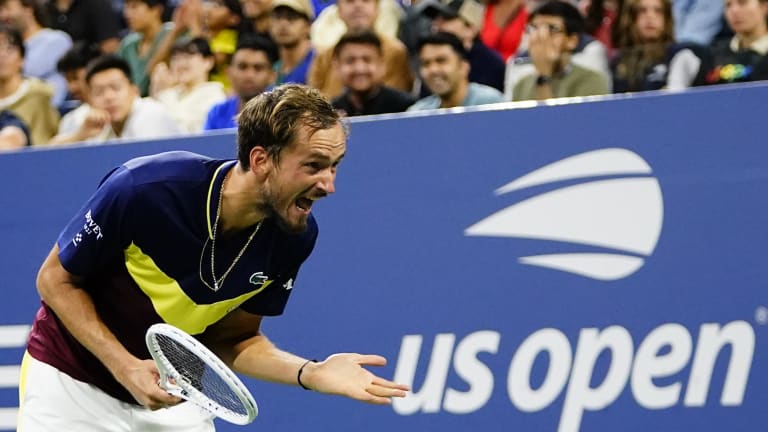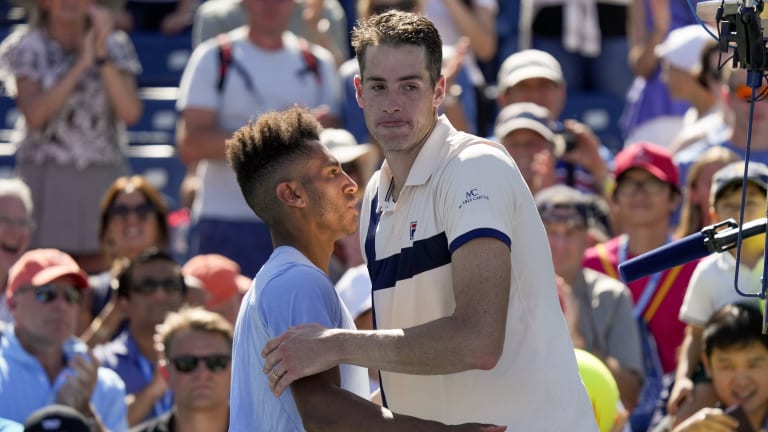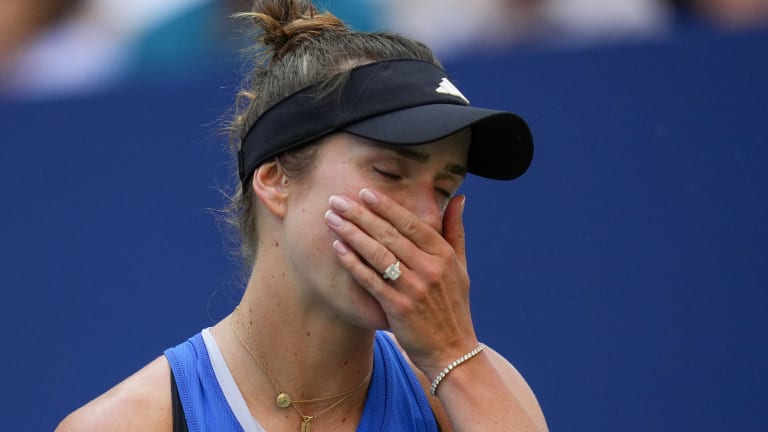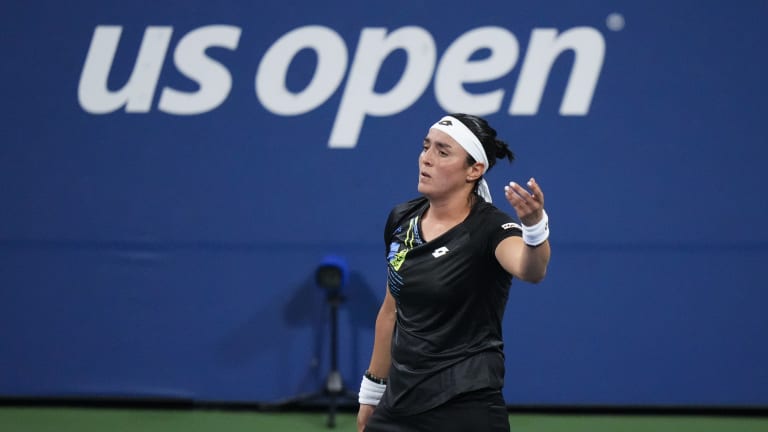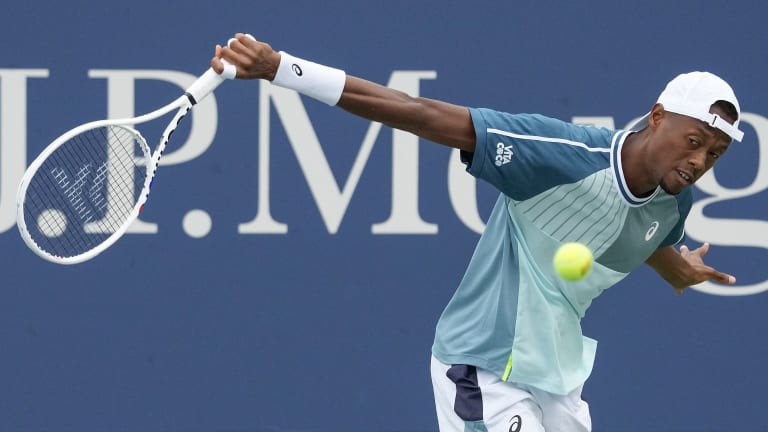NEW YORK (AP) — One point from defeat against
John Isner at the
U.S. Open, Michael Mmoh faced a decision tennis players deal with all the time, whether on a public court or a
Grand Slam stage: Swing away and go for broke? Or play it safe?
Serving at 30-40 while trailing 5-4 in the fifth set Thursday, Mmoh chose to approach the moment as if it weren't particularly special — even if losing that point would mean losing the second-round match. So he didn't rear back and try to smack his biggest serve of the afternoon; he made sure to get the ball in.
"You've almost got to think of it as another point," Mmoh would say after saving that match point with a 117 mph offering that drew a netted return, then going on to win on his own initial match point 25 minutes later to send Isner into retirement. "The more you think of, ‘Oh, if I miss the shot here, the match is done,' you're probably going to end up missing a shot."
Any tennis contest played to its conclusion ends with at least one match point, where one competitor is a single point from victory and the other is a single point from defeat. Sometimes, there's more than one. And sometimes, as in Mmoh vs. Isner, each player ends up on each side of the equation. The psychology of how to confront those situations — trying to convert a match point or needing to erase one — is a big part of a sport that, unlike soccer, for example, can't end in a tie, and unlike basketball, doesn't end when time runs out on the clock.
"I mean, they're both stressful. ... Sometimes you overthink," said Ons Jabeur, a three-time major finalist who needed four match points to finish off her second-round victory.
